If you just want the base recipe you’re welcome to skip to the bottom, my R&D notes are included for the science nerds among us.
I spent the past several weeks working on a vegan ice cream base as part of a new series of ice cream videos. I met Halle Burns at the launch of her cookbook, Call Me Vegan, and wanted to tackle the challenge of making a vegan ice cream. We landed on her go-to cafe order: an oat milk matcha latte.
The challenge
Plant-based ice creams have expanded across grocery shelves and scoop shops in the last decade, often made with oats, coconut, almonds, cashews, and more. Halle identified a couple of key challenges with plant-based options available from the grocery store:
Iciness. Dairy has the benefit of an ideal mix of fats and proteins suspended within, which help create a smooth and creamy ice cream. Plant milks don’t have this inherent property and have a higher proportion of water compared to dairy milk. Too much water and you’ll end up with ice crystals or a big frozen block.
Gumminess. Most plant-based ice creams rely on stabilizers to disrupt ice crystal formation, mine included. The problem arises when there’s simply too much. The challenge is to strike a careful balance of smoothness without making the mix too gummy.
There are many recipes for vegan ice cream designed to be made at home, but they overwhelmingly require immediate consumption. I love a thick blended smoothie, but my goal is to make an ice cream that can be stored in the freezer and gifted.
Recipe goals and constraints
I’m not looking to make the most accessible vegan ice cream recipe, I’m trying to make the best version of a vegan ice cream that’s achievable at home. There’s a good chance you’ll need to order some of the ingredients online, unless your pantry is already equipped for molecular gastronomy experiments.
While I’ve removed constraints around ingredient accessibility and time, I’ve added a few constraints of my own:
Flavor. Coconut cream is a popular base for homemade dairy-free ice creams because it contains a high proportion of fat and it’s already homogenized. That said, sometimes you just don’t want coconut flavor in your ice cream.
Sweetness. Ice cream sweetness is often measured in POD (potere dolcificante), which measures the relative sweetness of the ice cream against sucrose (table sugar). For example, sucrose has a POD of 100 and dextrose has a POD of 70, indicating that dextrose is less sweet than sucrose. Most ice cream recipes I’ve read through have a POD around 180-220. I’ve developed a preference for ice cream that’s not too sweet, so my recipes increasingly skew towards a POD of 150.
Fat. The right amount of fat affects how our brain feels satisfaction— a sorbet doesn’t scratch the same itch as ice cream for me. Too little fat and you’re eating diet ice cream, too much fat and it mutes the flavors. The estimated fat content of my recipe is about 14%, consistent with the government definition for premium ice cream (12-14% milk fat). There’s some inevitable variation since I’ve opted to make my own oat milk.
Greasiness. My biggest gripe with dairy-free ice creams from the store is the mouthfeel. The flavors are better and more diverse than ever, but that slick coating on the roof of my mouth is my number one pet peeve. The right mix of solid and liquid fats is crucial to get the right melting temperature. If it melts too quick it’s just not creamy, too slow and it’s like eating wax.
The recipe breakdown
With the above constraints in mind, I set off referencing Underbelly’s vegan ice cream and the vegan base from Adrienne Borlongan’s book Wanderlust Creamery Presents: The World of Ice Cream as my starting points to understand the science of vegan ice cream.
Ingredients
A common thread between the recipes is the use of a sugar blend, stabilizers, and added solids to achieve the ideal texture. My mix of sugars and stabilizers are different from the two recipes I referenced, but the underlying logic is similar.
I’m starting with Halle’s instant oat milk recipe from her book Call Me Vegan, and opted to use pistachios for the nut component. Underbelly’s article on the fat emulsion of ice cream provided helpful guidance on determining a mix of fats for the ideal mouthfeel and structure.
Every component in this recipe plays a distinct role—not just in flavor, but in texture, scoopability, and stability. Here’s a closer look at the role of each ingredient:
Unsweetened Oat Milk
This forms the creamy base of our ice cream. Oat milk is relatively neutral and high in solids, which helps with mouthfeel and body. Borlongan recommends using pea milk for a more neutral flavor base.Refined Coconut Oil
This is solid at room temperature, which contributes to the sensation of richness and a melt-in-your-mouth creamy texture. Refined coconut oil is more neutral in flavor than virgin coconut oil.Roasted Pistachio Oil
Beyond lending a toasty, nutty depth of flavor, pistachio oil is a liquid fat that prevents the ice cream from leaning too waxy.Dextrose
A less-sweet sugar with powerful freezing point depression, dextrose is crucial for keeping the ice cream soft and scoopable straight from the freezer.Sucrose
Regular table sugar balances sweetness and works in tandem with dextrose to control texture and freezing point.Kosher Salt
Just a pinch heightens all the other flavors and keeps the sweetness from becoming cloying.Carboxymethyl Cellulose (AKA cellulose gum AKA CMC)
This cold-soluble stabilizer adds body and reduces iciness by helping the mix retain water during freezing.Guar Gum
A natural thickener, guar gum improves texture and adds body so the mix is more akin to a dairy custard.Soy Lecithin
This emulsifier helps bind fat and water, preventing separation and enhancing creaminess throughout the churn.Inulin
Inulin is chicory root fiber, often sold as a dietary supplement. Inulin adds subtle sweetness, improves creaminess, and increases total solids.
The method
Heat (or lack thereof)
Much like cooked oatmeal, homemade oat milk will gelatinize into a thick, pudding-like consistency when heated. Recipe tests 1 and 2 resulted in thick, gloopy bases that were too cloying when they melted on the tongue.
I switched my approach from replicating a high-fat dairy based ice cream with plant-based fats to first making an oat milk sorbet then factoring in the fat. I typically avoid using cellulose gum (CMC) with dairy ice creams since it’s not compatible with the proteins. In this application, dairy proteins aren’t an issue so I take advantage of CMC’s powerful ice crystal suppression, cold hydration, and minimal effect on the viscosity of the mix.
Homogenization & Fat Amalgamation
When I asked Tyler Malek from Salt & Straw about formulating vegan ice creams he mentioned the importance of homogenization. Homogenization is a mechanical process that breaks down fat globules in a liquid into smaller, uniformly distributed particles. It prevents separation and ensures emulsion stability. We want to achieve an effect called fat amalgamation, which is the merging of small fat droplets into a cohesive fat network. In vegan ice creams, the solid fat from coconut oil can crystallize to form those networks.
A high speed homogenizer is the ideal tool for the job, but an affordable consumer option just doesn’t exist in the US. A blender doesn’t achieve this as well as a commercial homogenizer since the blades can’t create a uniform high-pressure shear and it generates heat. That said, a home blender is still my best bet.
Aging
You can’t rush perfection and it couldn’t be more true with this ice cream base. I tried to cheat the process and skip the aging step in one of my tests and the difference was huge. The unaged base was denser and greasier feeling after churning. So what happens to the ice cream base when you let it sit in the fridge overnight?
Hydrates stabilizers and emulsifiers
Ingredients like CMC, guar gum, and soy lecithin need time to fully hydrate and disperse in the mix. This ensures they can do their jobs like reducing iciness, binding fat and water, and improving texture without clumping.
Boosts creaminess and body
By allowing the inulin and starches in oat milk to fully hydrate and swell, aging enhances the body and scoopability of the ice cream, mimicking the dense texture of dairy-based versions.
Improves emulsion
Over time, the fat droplets (from coconut and pistachio oil) more thoroughly emulsify into the water phase, especially with the help of lecithin.
Builds structure
Partial coalescence is when some fat droplets partially clump together but don’t fully merge into one mass (that would be butter). This process happens during aging and churning and is essential in ice cream for building structure and trapping air.
Churning
Once aged and chilled, the mix is ready to churn, This is where the final structure of the ice cream is built. During churning, three things happen simultaneously:
Air is incorporated
Ice crystals form
Fat droplets undergo partial coalescence
Vegan ice cream can be trickier to churn than dairy-based mixes because plant fats don’t behave the same way. But thanks to aging, our coconut oil has had time to crystallize, and our stabilizers and emulsifiers are fully hydrated. Together, this allows the fat to partially clump in a way that mimics the texture-building of dairy fat.
If your churned base looks too soft, don’t panic, it will firm up in the freezer. Just be sure to transfer it quickly to a container and freeze for at least 4 hours.
Vegan Ice Cream Base Recipe
Get my vegan ice cream base recipe on my blog! It’ll navigate you straight to the recipe, plus it’s printable.
While it takes a few specialty ingredients and a bit of patience, I promise the result is worth it: a plant-based ice cream that has the same satisfying creaminess and a texture that holds up in the freezer.
The Pistachioat Matcha Latte flavor is also included in the recipe post.
The stats
Total mix: 944.5g
Fat: 13.9% (assumes 1% fat in oat milk)
Relative sweetness (POD): 168
PAC: 327 (-16.4°C serving temperature)
Total solids: 42.8% (assumes 10% solids in oat milk)
A note on sharing recipes for free
This was the first recipe I’ve shared where I’ve really contemplated putting up a paywall. Paying for recipes reaffirms their value, but diminishes their accessibility. I’m lucky that I can continue to share my work for free thanks to support from my videos.
So I’m kindly asking that if you found value in this, please consider subscribing to this newsletter to support me. It costs $0 to subscribe and you’ll receive posts with my latest recipes and deep dives directly in your inbox.
If you’ve tried this recipe, or any of my recipes for that matter, I’d appreciate if you could leave a comment with your feedback.





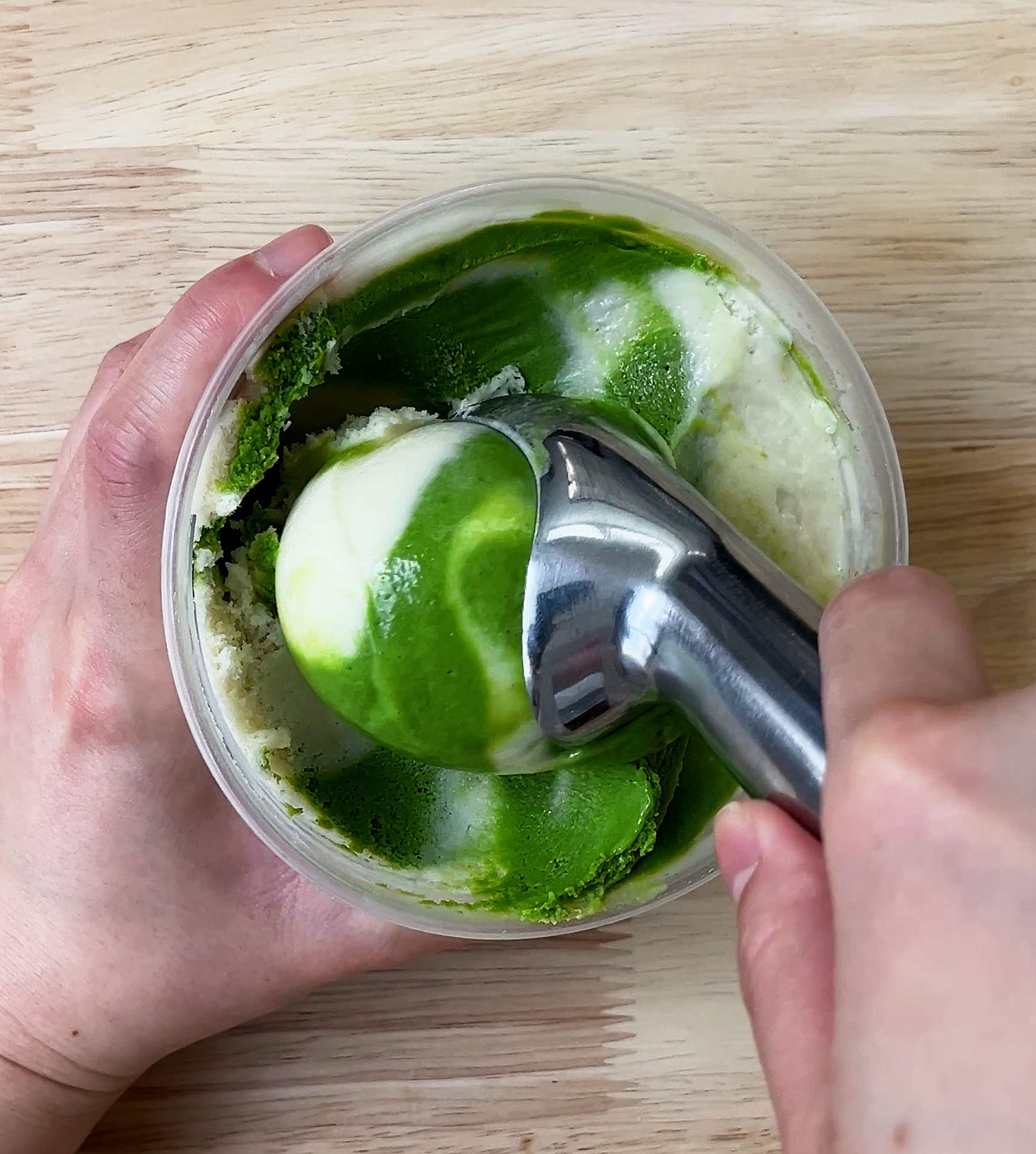
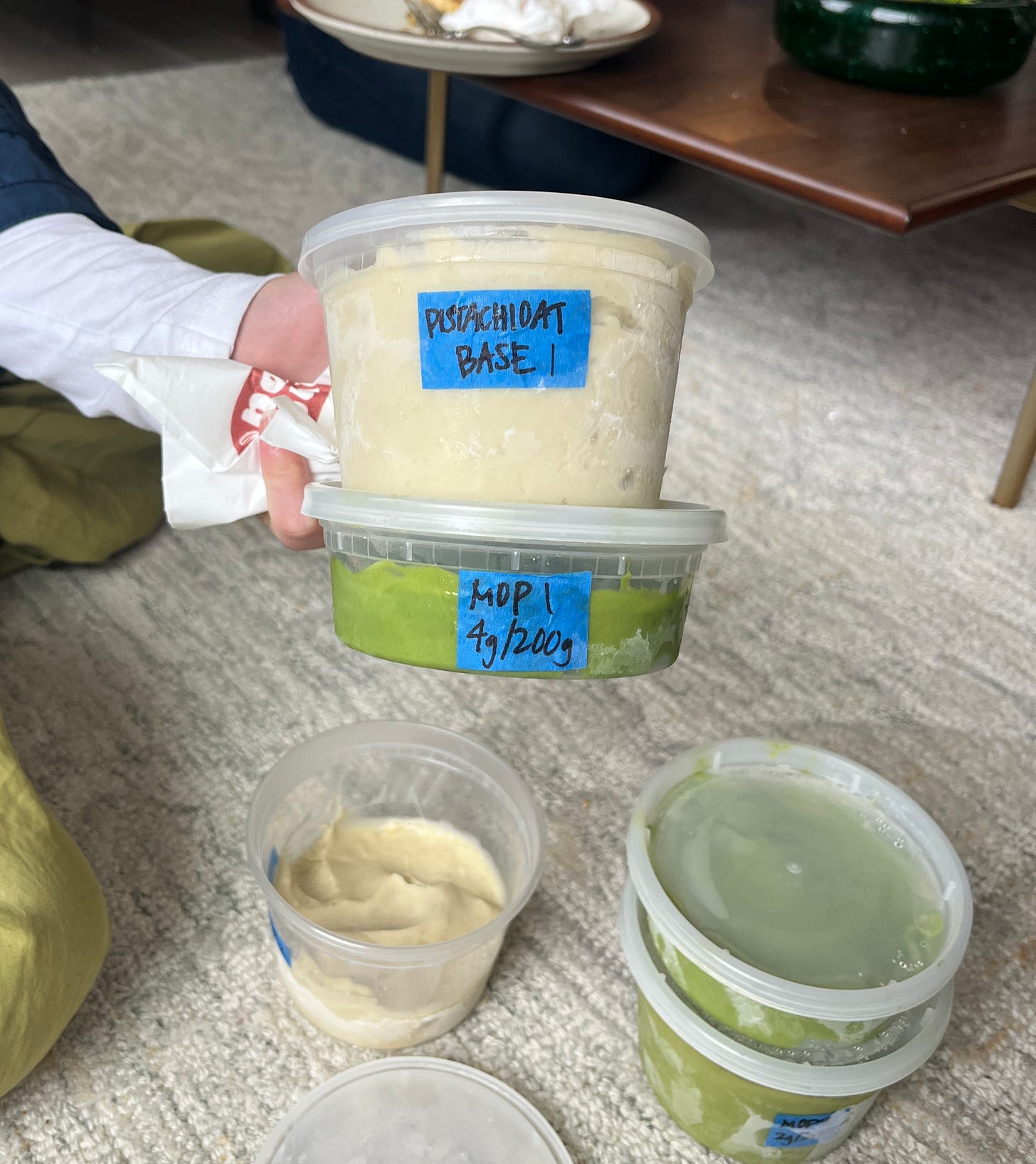
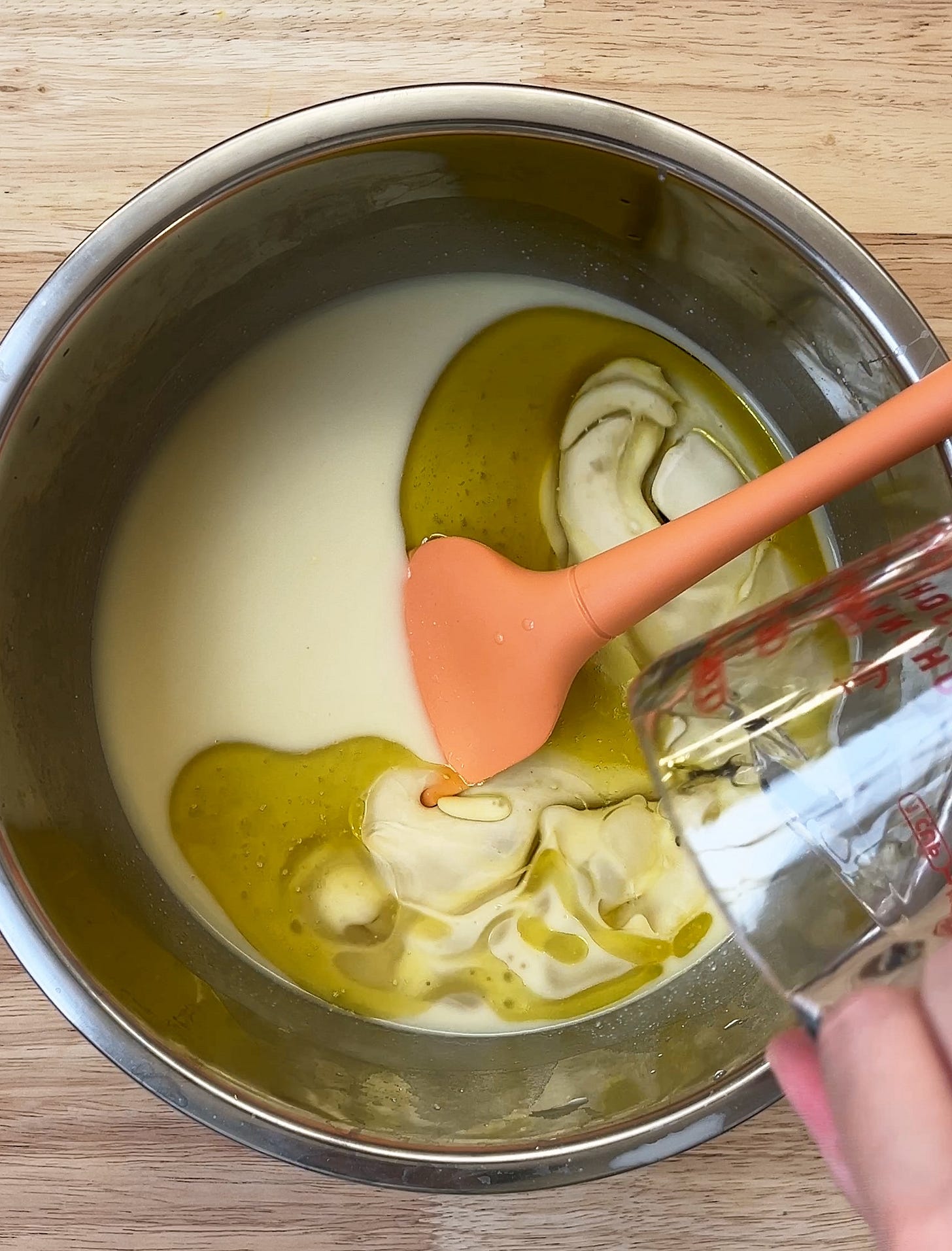
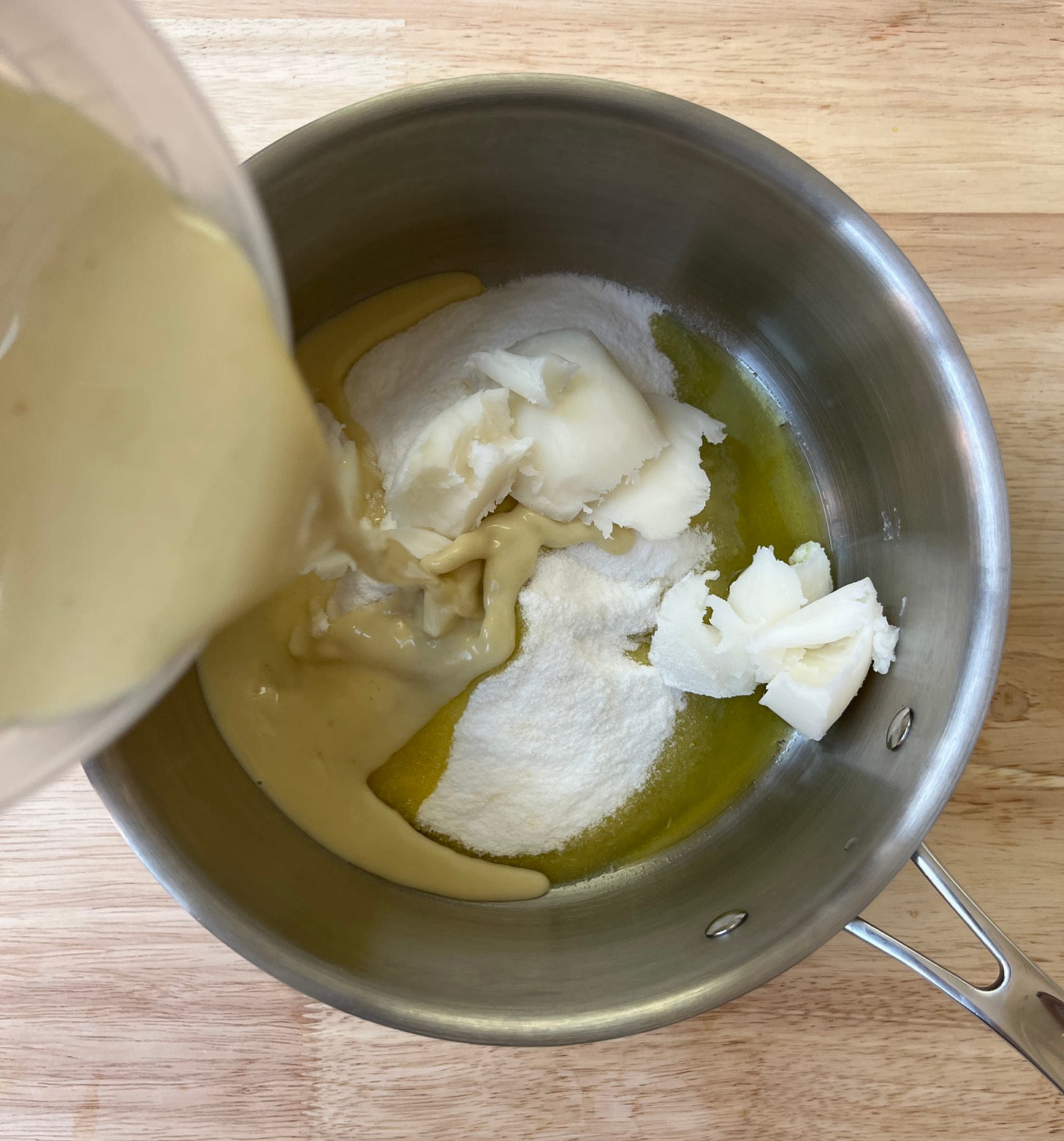

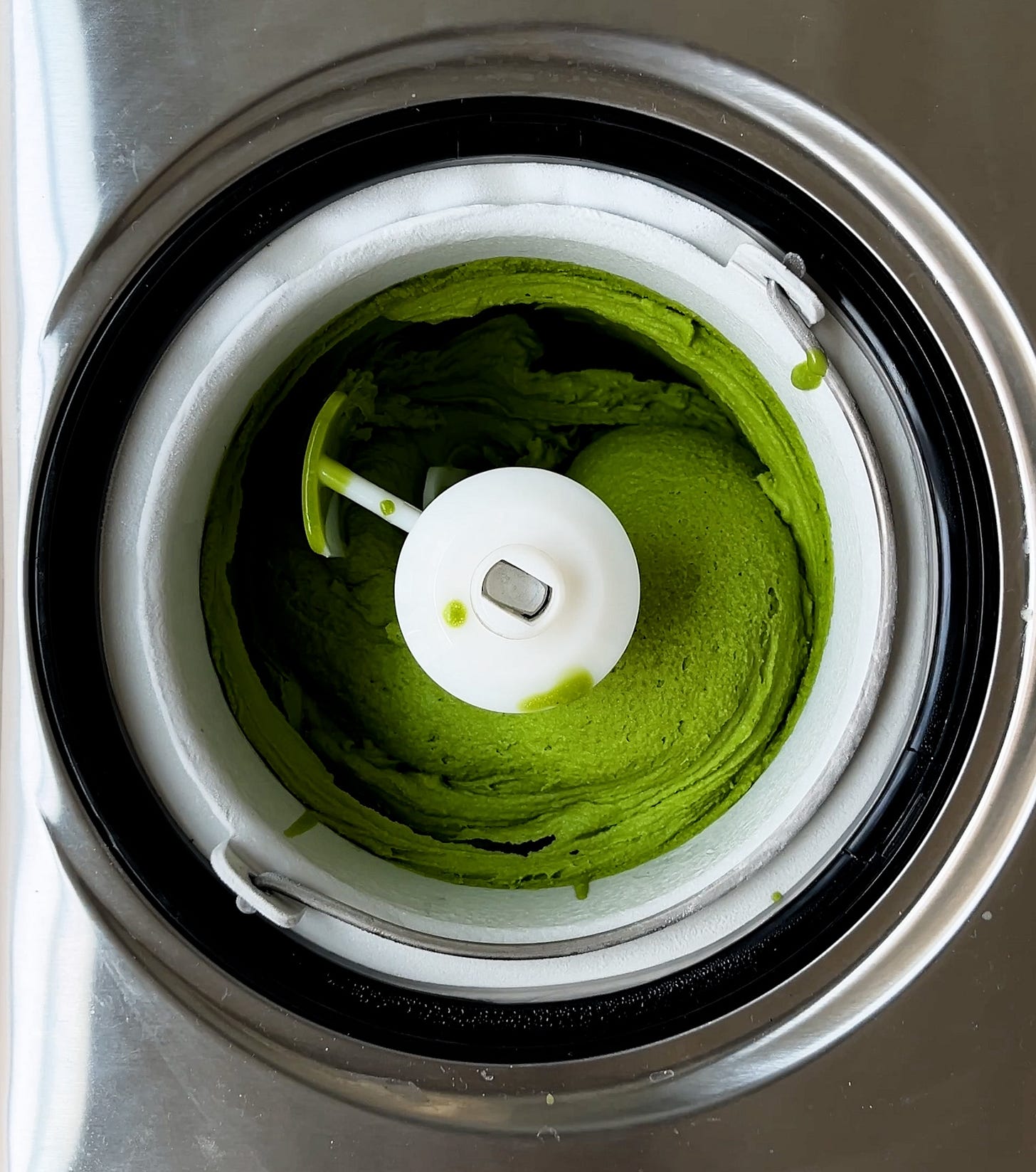
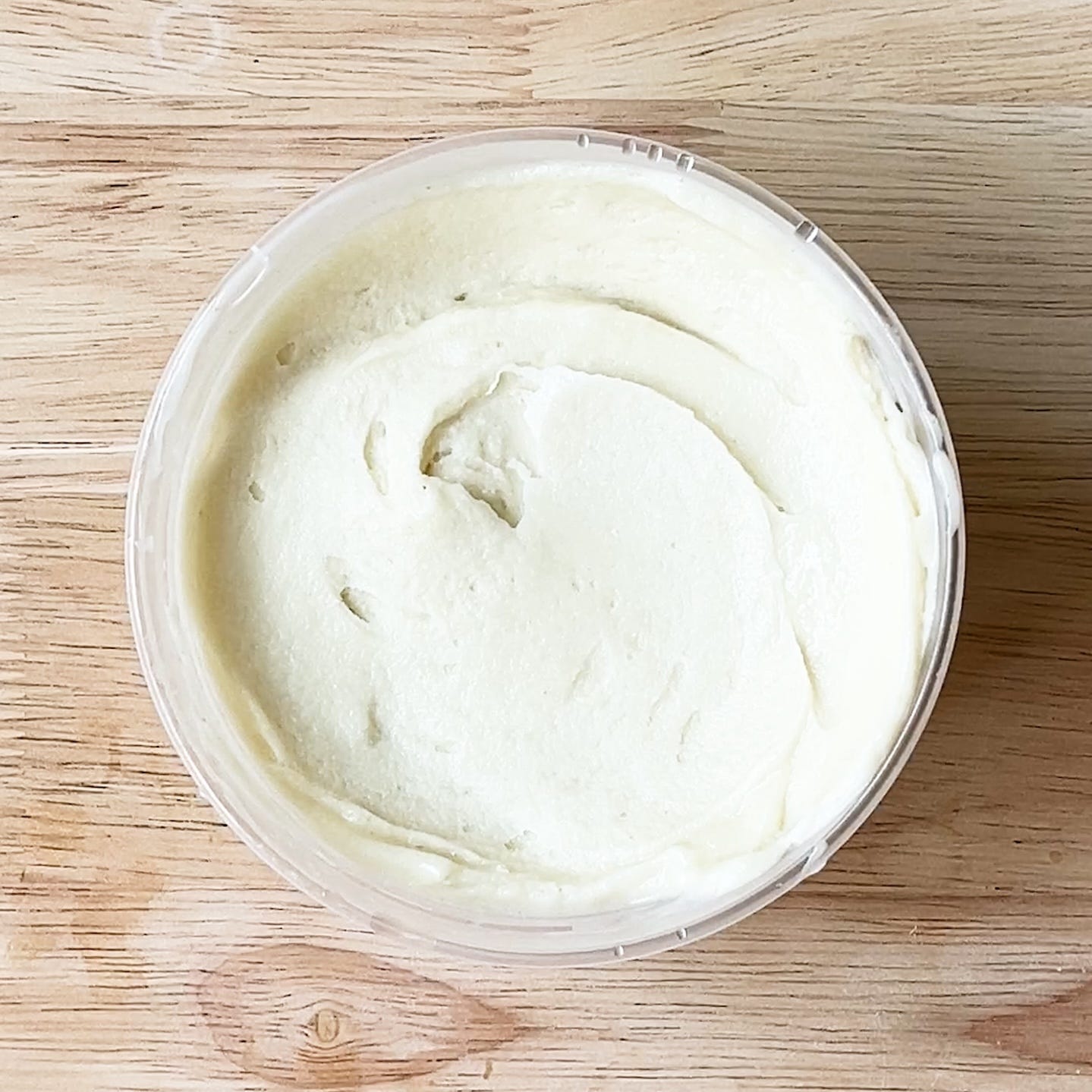
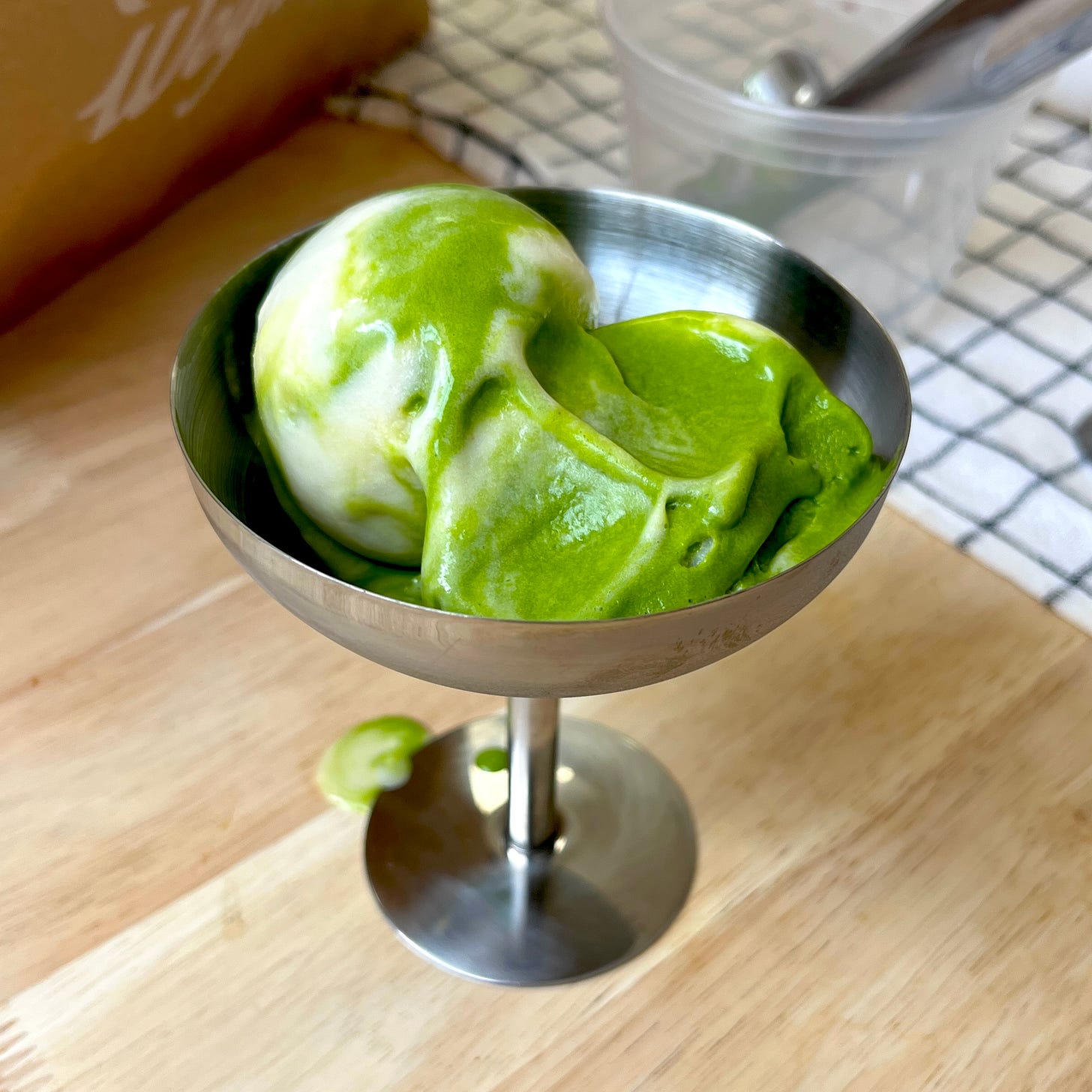
omg thank you for sharing the recipe!!! i was so excited when i saw your instagram post about this, it looks amazing :)
if i wanted to make a chai flavor, do you think i would steep the spices and tea when the base is completed or would i steep in water and use that water to make the oat milk?